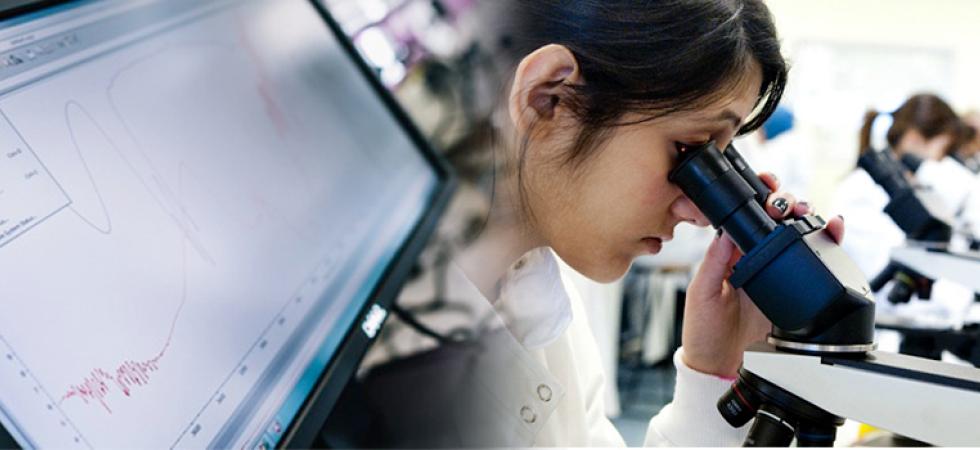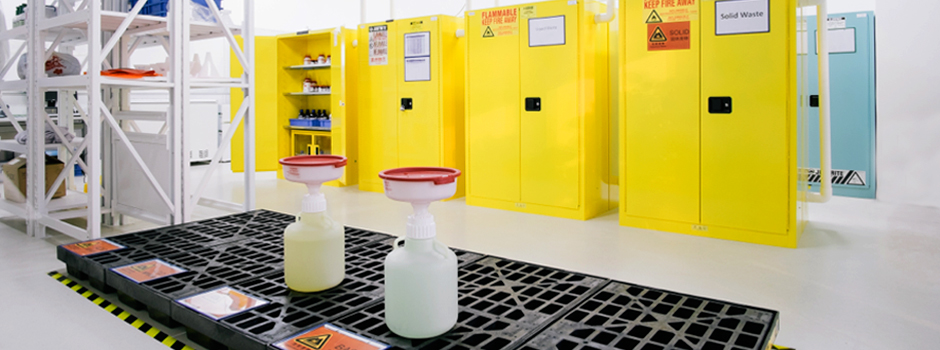
Emergency Procedures for Teaching Laboratories
The hardcopy of Emergency Procedure for Teaching Laboratories (Updated April 2023) has been provided in each laboratory.
Safety Training
All lab users are required to take lab safety orientation and pass the quiz before they work in the laboratories. Please consult the Laboratory Management Team and the Environmental Health & Safety for laboratory access and training recommendations.
Safety Equipment
The laboratory supplies the following to the labs:
- Lab Coats
- Goggles & Safety glasses
- Masks
- Spill kits
- First aid kits
- Chemical secondary containment
- Biohazard waste containers
- Liquid hazardous waste containers and solid hazardous waste containers
- Sharps waste containers
- Broken glass containers
- Safety showers
- Fire extinguishers
- Fire blankets
- Sand
- Blankets
Regular inspections of safety equipment are done periodically.

Chemicals are classified and stored according to their different Chemical Properties.
• Flammable
• Acid/Base
• Strong Acid
• Low Temperature
Inventory is updated weekly and a barcode has been used to manage each specific chemical bottle.
Waste Handling
• Biohazard materials
• Chemical waste
• Acid
• Base
• Organic
• Solid
• Broken glass
• Sharp materials
• Regular waste
Biology
- Flow Cytometer
- Inverted Fluorescence Microscope
- Chemiluminescence Imager
- Medical X-ray Processor
- Microvolume Spectrophotometers and Fluorometer
- Thermal Cycler
- Real-Time PCR
- DNA Electrophoresis System
- Protein Electrophoresis and Blotting System
- Immunowash Microplate Washer
- Microplate Read
- Sonic Dismembrator
- CO2 Incubator
- Biosafety Cabinet
- Clean Bench
Chemistry and Organic Chemistry
- UV-Vis Spectrophotometer
- Visible Spectrophotometer
- Eclipse Fluorescence Spectrophotometer
- Rotor Evaporator
- Microscope
- Fiber Optic Spectrometer
- FT-IR Spectrometer
- Gas Chromatography
- Nuclear Magnetic Resonance (NMR)
Electrical Engineering
- Oscilloscope WaveRunner
- Arbitrary Waveform Generator
- Digital Multimeter
- Circuit Board Plotter
- Lead-free Reflow Oven
Physics
- Precision Oscilloscope
- Scientific Thermodynamics System
Genetics
- Stereoscopic Microscope

